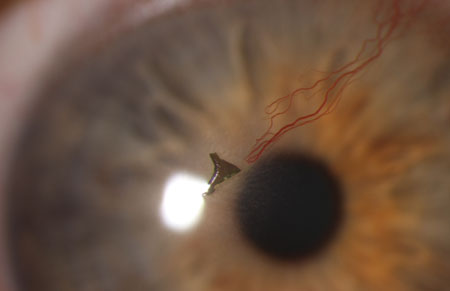There is a lot of confusion about what optometrists really do. We are so stereotypically associated with asking people "Which is better, 1 or 2?" and correcting vision problems that people are sometimes surprised to hear that we do a lot more! To help with the confusion I decided to start this new blog series "My eye doctor can detect which disease?". Some might surprise you, some might not. In honour of stampede we thought we would bring you the first in this blog series: Chlamydia.
Yes, seriously.
Please do not misunderstand, you will keep ALL of your clothes on during your eye exam. What allows us to detect chlamydia is not what you might think. Chlamydia actually can show up in your eyes.
I know it's a little gross but it's true. To you, as a patient, you would think that you just had pink eye. Much like a normal pink eye there will be a lot of gooey discharge from your eyes and your eye will be red and uncomfortable. The trouble with chlamydial pink eye is that you can use antibiotic drops constantly and it just won't go away! A normal pink eye will usually go away on its own in about a week even without treatment. People usually come in frustrated because they've been on medication for weeks and their pink eye isn't improving.
This is chlamydia. You don't really want to see what this looks like in the eye, do you?
So if antibiotic drops don't help how do you fix it? The good news is that chlamydia is easily treated with a single, strong dose of azithromycin in pill form. Once the bacteria is destroyed the eye infection (and other symptoms) will go away.
Remember that even if you can treat chlamydia quickly and easily it's always better to just not get it in the first place. You'll save yourself from an embarrassing discussion with your partner(s) if you protect yourself. Have a fun stampede but remember to stay safe!
As always if you would like more information you can contact us on Twitter, Facebook, Google +, via our website or phone us at (403) 474-6744.




